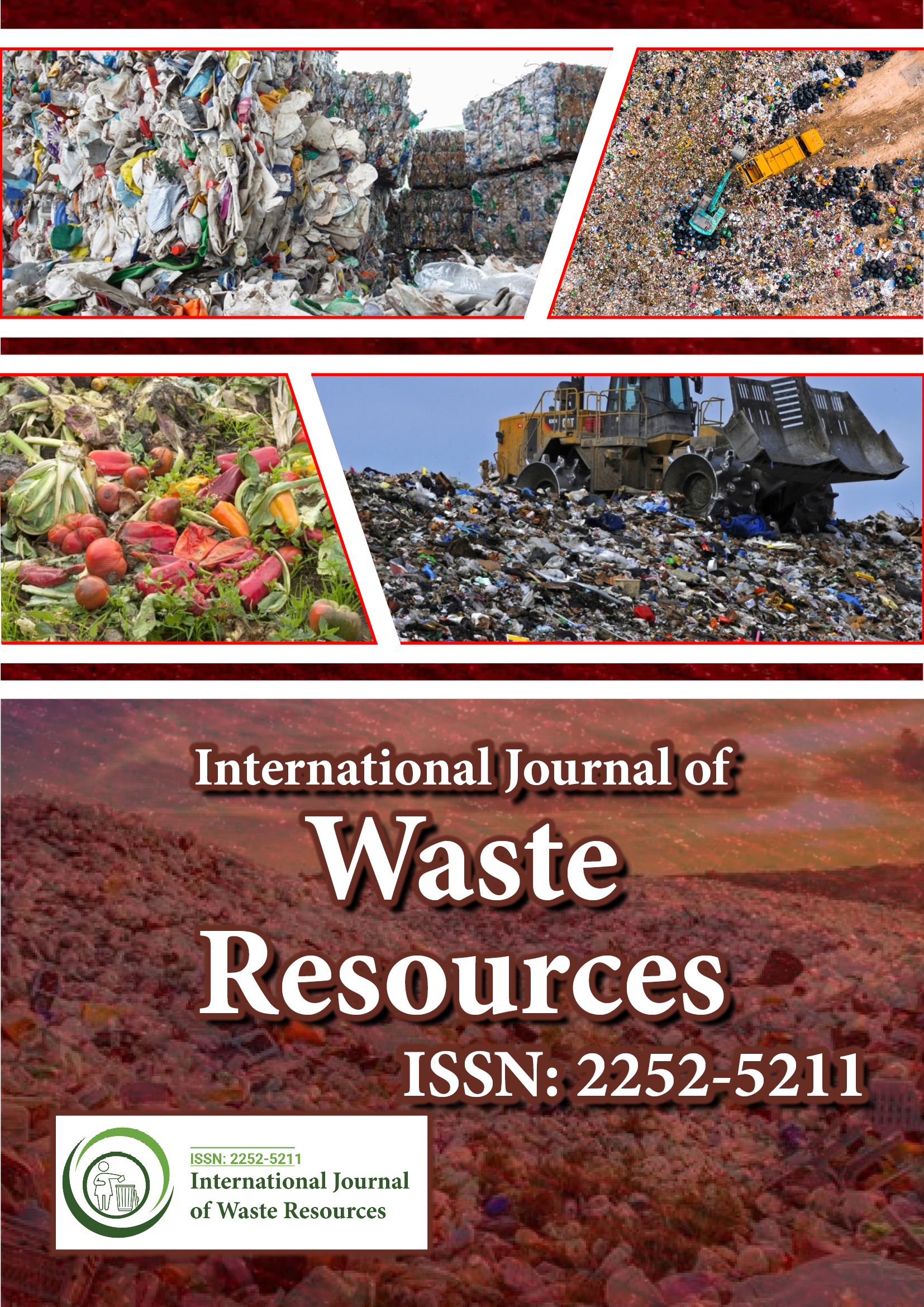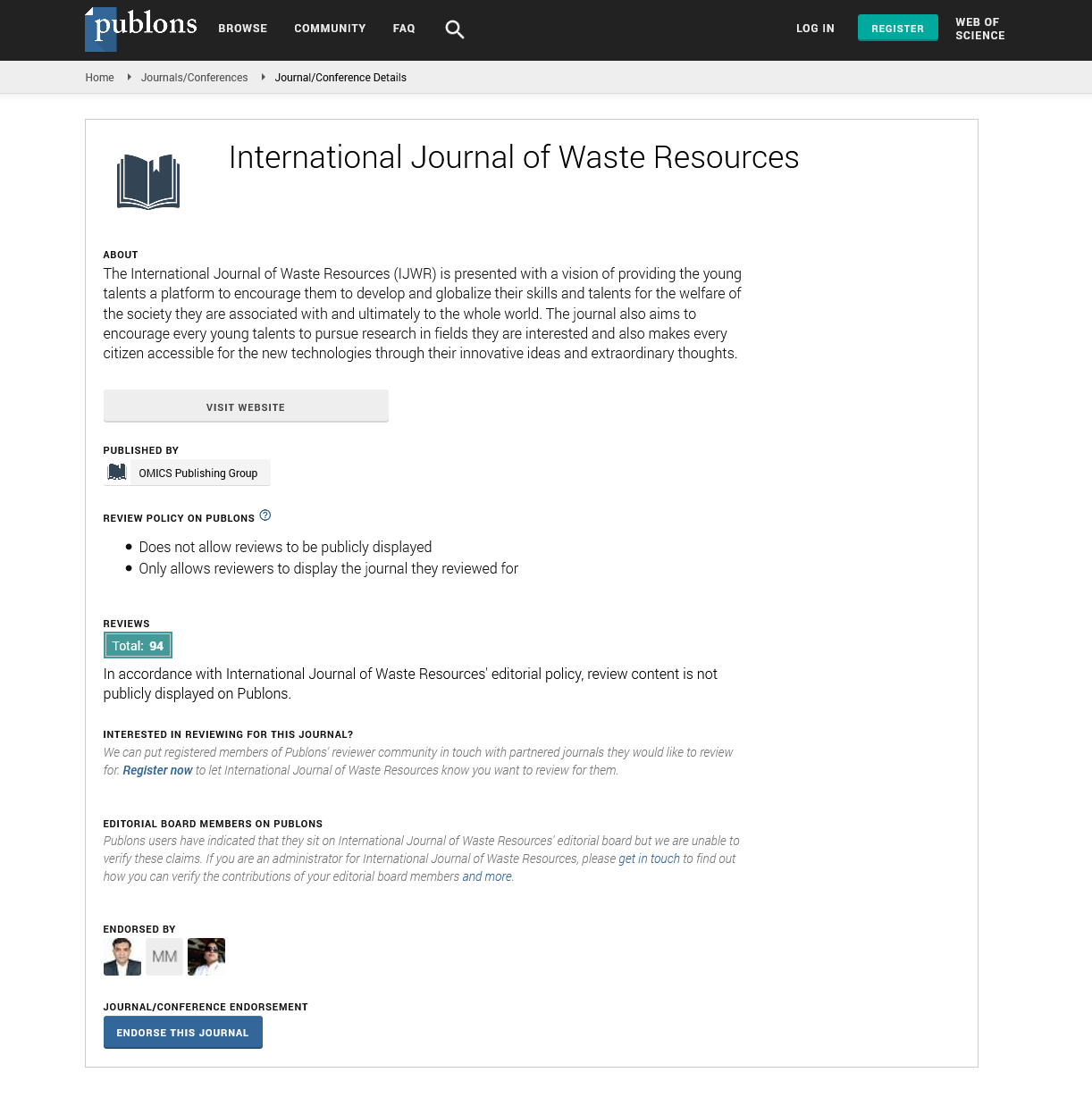Indexed In
- Open J Gate
- The Global Impact Factor (GIF)
- Open Archive Initiative
- VieSearch
- International Society of Universal Research in Sciences
- China National Knowledge Infrastructure (CNKI)
- CiteFactor
- Scimago
- Ulrich's Periodicals Directory
- Electronic Journals Library
- RefSeek
- Directory of Research Journal Indexing (DRJI)
- Hamdard University
- EBSCO A-Z
- Publons
- Google Scholar
Useful Links
Share This Page
Journal Flyer

Open Access Journals
- Agri and Aquaculture
- Biochemistry
- Bioinformatics & Systems Biology
- Business & Management
- Chemistry
- Clinical Sciences
- Engineering
- Food & Nutrition
- General Science
- Genetics & Molecular Biology
- Immunology & Microbiology
- Medical Sciences
- Neuroscience & Psychology
- Nursing & Health Care
- Pharmaceutical Sciences
Short Communication - (2024) Volume 14, Issue 2
Sustainable Practices in Shipbreaking Industry: Waste Management and Environmental Regulations
Received: 22-May-2024, Manuscript No. IJWR-24-26715; Editor assigned: 24-May-2024, Pre QC No. IJWR-24-26715(PQ); Reviewed: 14-Jun-2024, QC No. IJWR-24-26715; Revised: 21-Jun-2024, Manuscript No. IJWR-24-26715(R); Published: 28-Jun-2024, DOI: 10.35248/2252-5211.24.14.581
Description
The shipbreaking industry, responsible for dismantling decommissioned vessels, plays a key role in the global economy by providing recycled steel and other valuable materials. However, this process often comes with significant environmental and health risks. To mitigate these issues, sustainable practices and stringent environmental regulations are essential [1]. The focus on waste management and compliance with regulations can transform the industry, making it safer and more environmentally friendly. This method can lead to severe environmental degradation, as hazardous materials such as asbestos, Polychlorinated Biphenyls (PCBs), heavy metals, and oil residues are released into the environment. These pollutants can contaminate soil and water, posing risks to human health and marine life. To address these concerns, sustainable practices in waste management and adherence to environmental regulations are essential [2].
One of the primary aspects of sustainable shipbreaking is the proper handling and disposal of hazardous materials. Before dismantling begins, vessels must be thoroughly cleaned of hazardous substances. This process, known as pre-cleaning or decontamination, involves removing oils, fuel residues, and other toxic substances. Implementing effective pre-cleaning practices minimizes the release of pollutants during dismantling and ensures safer working conditions for laborers [3]. Recycling and reusing materials from decommissioned ships is another critical component of sustainable shipbreaking. Steel, which constitutes a significant portion of a ship’s weight, can be recycled and used in various industries, reducing the need for new steel production and conserving natural resources. Other materials, such as non-ferrous metals, electrical equipment, and machinery, can also be salvaged and repurposed. By maximizing the recovery of valuable materials, the shipbreaking industry can reduce its environmental footprint and contribute to a circular economy [4,5].
Environmental regulations play a vital role in promoting sustainable practices in shipbreaking. The Basel Convention, which regulates the transboundary movement of hazardous wastes, and the Hong Kong International Convention for the safe and environmentally sound recycling of ships, aim to ensure that shipbreaking activities do not harm human health or the environment. These international agreements set guidelines for the safe handling, treatment, and disposal of hazardous materials, and encourage the adoption of best practices in the industry [6]. Compliance with environmental regulations requires shipbreaking yards to invest in proper infrastructure and technology. Modern, environmentally sound ship recycling facilities often include impermeable flooring to prevent soil contamination, drainage systems to collect and treat wastewater, and containment areas for hazardous materials. These facilities are designed to minimize the environmental impact of shipbreaking activities and protect the health of workers and nearby communities [7].
Worker safety is another critical aspect of sustainable shipbreaking. Laborers in the shipbreaking industry are often exposed to hazardous conditions, including toxic fumes, heavy metals, and physically demanding tasks. To protect workers, shipbreaking yards must implement comprehensive safety measures, such as providing Personal Protective Equipment (PPE), training workers in safe handling of hazardous materials, and ensuring proper ventilation in enclosed spaces. Adopting these measures not only safeguards workers’ health but also enhances the overall sustainability of the shipbreaking process. Innovative technologies are also playing a crucial role in advancing sustainable practices in the shipbreaking industry [8]. For instance, mechanized cutting and dismantling tools can replace manual labour, reducing the risk of accidents and exposure to hazardous materials. Additionally, advancements in waste treatment technologies, such as bioremediation and phytoremediation, offer promising solutions for managing contaminated soil and water at shipbreaking sites [9].
Community engagement and transparency are essential components of sustainable shipbreaking practices. Shipbreaking yards should actively engage with local communities, informing them about the environmental and health impacts of shipbreaking activities and the measures being taken to mitigate these risks. Transparency in operations can build trust with stakeholders and ensure that the industry remains accountable for its environmental and social responsibilities [10]. Furthermore, economic incentives and support from governments and international organizations can drive the adoption of sustainable practices in the shipbreaking industry. Subsidies, tax incentives, and access to low-interest loans can help shipbreaking yards invest in environmentally sound technologies and infrastructure.
Conclusion
Proper waste management, compliance with international conventions, investment in modern infrastructure and technology, worker safety measures, and community engagement are all critical components of a sustainable shipbreaking industry. By adopting these practices, the industry can minimize its environmental impact, protect workers and local communities, and contribute to a more sustainable and circular economy. As global demand for ship recycling continues to grow, the implementation of sustainable practices will be essential to ensuring that the shipbreaking industry evolves into a safer and more environmentally responsible sector.
References
- Ma X, Ma Y, Zhou J, Xiong S. The recycling of spent power battery: Economic benefits and policy suggestions. InIOP Conference Series: Earth Environ Sci. 2018;159(1):012017.
- Martins LS, Guimaraes LF, Junior AB, Tenorio JA, Espinosa DC. Electric car battery: An overview on global demand, recycling and future approaches towards sustainability. J Environ Manage. 2021;295:113091.
- O’Farrell K, Veit R, A’Vard D. Trend analysis and market assessment report. National Environment Protection Council Service Corporation. 2014.
- Wang X, Cheng G, Zhong X, Li MH. Trace elements in sub-alpine forest soils on the eastern edge of the Tibetan Plateau, China. Environ Geol. 2009;58(3):635-643.
- Syaichurrozi I, Sumardiono S. Predicting kinetic model of biogas production and biodegradability organic materials: Biogas production from vinasse at variation of COD/N ratio. Bioresour Technol. 2013;149:390-397.
[Crossref] [Google Scholar] [PubMed]
- Tang J, Wang XC, Hu Y, Zhang Y, Li Y. Effect of pH on lactic acid production from acidogenic fermentation of food waste with different types of inocula. Bioresour Technol. 2017;224:544-552.
[Crossref] [Google Scholar] [PubMed]
- Thiébaut G. Phosphorus and aquatic plants. InThe ecophysiology of plant-phosphorus interactions. 2008:31-49.
- Tiwari S, Dixit S, Verma N. An effective means of biofiltration of heavy metal contaminated water bodies using aquatic weed Eichhornia crassipes. Environ Monit Assess. 2007;129(1):253-256.
[Crossref] [Google Scholar] [PubMed]
- Veeken A, Kalyuzhnyi S, Scharff H, Hamelers B. Effect of pH and VFA on hydrolysis of organic solid waste. Journal of environmental engineering. 2000 Dec;126(12):1076-1081.
- Wu QL, Guo WQ, Zheng HS, Luo HC, Feng XC, et al. Enhancement of volatile fatty acid production by co-fermentation of food waste and excess sludge without pH control: The mechanism and microbial community analyses. Bioresour Technol. 2016;216:653-660.
[Crossref] [Google Scholar] [PubMed]
Citation: Philpott M (2024) Sustainable Practices in Shipbreaking Industry: Waste Management and Environmental Regulations. Int J Waste Resour. 14:581.
Copyright: © 2024 Philpott M. This is an open-access article distributed under the terms of the Creative Commons Attribution License, which permits unrestricted use, distribution, and reproduction in any medium, provided the original author and source are credited.

